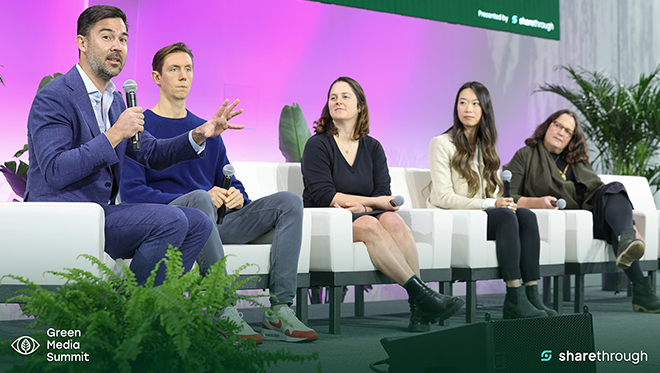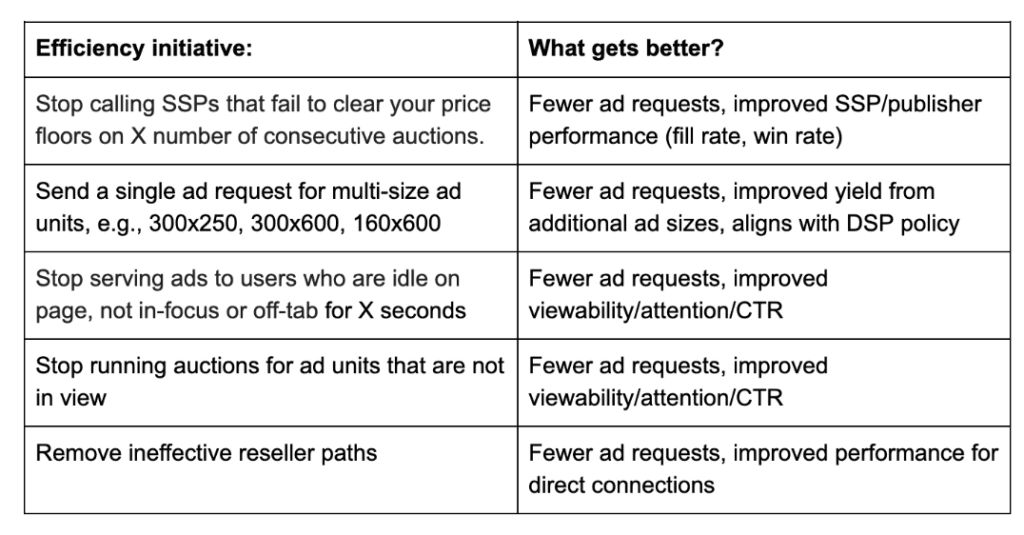
Offering a comprehensive look at sustainable ad operations practices, Unwind Media’s Emry Downinghall reveals how reducing emissions can also enhance revenue.
In digital advertising’s evolving landscape, sustainability is often seen as a necessary yet challenging goal. Emry Downinghall, SVP of Programmatic Revenue & Strategy at Unwind Media, is at the forefront of this transformation.
Unwind Media is pioneering strategies that not only lessen the publisher’s environmental impact but also enhance their bottom line. In this exclusive Q&A, Downinghall shares insights into the innovative approaches that have enabled Unwind Media to balance economic performance with ecological responsibility, providing valuable lessons for the industry.
Let’s explore how these strategies are reshaping the future of sustainable media.
 Lynne d Johnson: At the Green Media Summit, your panel explored how publishers can reduce carbon emissions without sacrificing revenue. From Unwind Media’s perspective, how do you balance these two sometimes conflicting goals, and what has been the most challenging aspect of aligning sustainability with business objectives?
Lynne d Johnson: At the Green Media Summit, your panel explored how publishers can reduce carbon emissions without sacrificing revenue. From Unwind Media’s perspective, how do you balance these two sometimes conflicting goals, and what has been the most challenging aspect of aligning sustainability with business objectives?
Emry Downinghall: The most challenging aspect was convincing business leaders that this was possible and something worth prioritizing on our roadmap.
For publishers, the idea of reducing emissions without negatively impacting business performance does feel like a conflict. Historically the open exchange has mostly rewarded more (partners, bid requests, ads on page) with more (bid density, impressions, revenue), all of which require more energy and generate more emissions, and our initial perspective was no exception.
However, my primary focus was improving our open exchange efficiency while also improving KPIs that matter to advertisers like viewability and CTR. It just turns out that a great way to improve your attractiveness in the open market coincides with reducing emissions.
LdJ: Unwind Media has implemented innovative traffic-shaping strategies like “no ads if idle” and “smart request.” Can you elaborate on how these tactics contribute to sustainability and potentially enhance user experience and ad viewability? What have been the measurable impacts on your ad operations and revenue?
ED: First, let’s define what these things are as simply as possible. It’s two, pretty straightforward features we integrated into our ad wrapper that require a small amount of code to monitor and manage bid requests and auctions.
‘Smart Request’ stops calling SSPs that have failed to clear our dynamic price floor for X-number of auctions over Y-period, by user session and ad unit. ‘No Ads If Idle’ stops the programmatic auction if we detect the user is idle on-page for more than 60 seconds.
The sustainability benefits of these programs are centered around making a publisher’s programmatic auction more efficient. If you’re making fewer ad requests, you’re using less energy and becoming more sustainable.
Smart Request leads to fewer total requests to SSPs resulting in a lowered carbon footprint, while also improving the performance and cost efficiency of the publisher to the SSP. Put simply, you’re a more attractive pipe to your partners because you send them more of what they want and less of what they don’t want. No Ads If Idle is a commonsense approach that reduces requests while improving viewability, CTR and attention scores.
We measured no negative revenue impact from these tests and cut total ad requests to SSPs by more than 50% while also improving desktop viewability by over 14%.
LdJ: When it comes to media sustainability, how do you view the division of responsibility between publishers and advertisers? Should there be a shared approach, and how can both sides collaborate more effectively to amplify their impact?
ED: I think meaningful change will come from a combination of education (what this is, why it matters) and business-focused outcomes.
I haven’t spoken to a publisher that isn’t supportive of becoming more sustainable. They just want to better understand what this means for their business and how it can realistically tie into their goals.
ShareThrough’s Green Media Summit was an example of cross-industry education and shared best practices. Scope3’s carbon measurement tool is a good place to get a sense of where you stand vs. the rest of the industry and the IAB Tech Lab’s Sustainability Playbook is a great resource as well.
LdJ: Looking forward, what emerging strategies do you see as key to further reducing the carbon footprint of digital advertising?
ED: I’d like to see more clearly defined benefits for publishers that choose to make responsible decisions around things like ads-to-content ratio, bid request duplication, and ads.txt entries.
Scope3’s GMP+ along with SSPs that curate “Green PMP” deals for publishers are two examples of ways to benefit directly from being more sustainable. Let’s make that approach more pervasive across the industry.
LdJ: For publishers looking to reduce their environmental impact without hurting their bottom line, what key lessons or practices from Unwind Media’s experience would you recommend they consider?
ED: Focus on internal measurement first. If you can easily understand what’s happening at the bidstream level you’ll be more willing to test and more capable of determining outcomes with confidence.
Don’t try to do everything at once. This is an iterative process that we’ve been working on since July of 2022. At no point did we run two tests at the same time.
Think of these changes as foundational improvements to your ad stack and don’t conflate them with short term yield tests.
Internally, take advantage of opportunities to tie outcomes to product goals around user experience. As you work towards being a more efficient publisher your user experience will also improve and you’ll be popular internally 😀!
I’ll close with a list of 5 things we’ve done to become a more efficient and sustainable publisher. If you’re able to test into any of these changes you will not only holistically improve your inventory
5 Ways to Become a More Efficient and Sustainable Publisher
